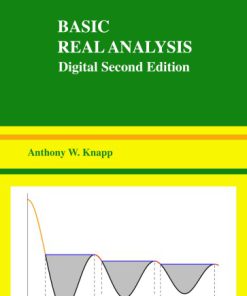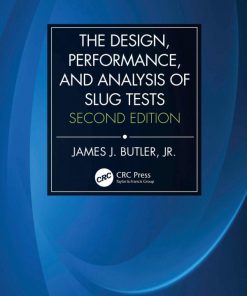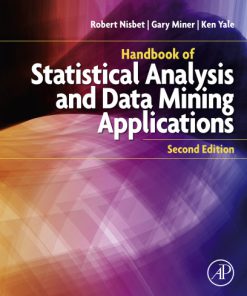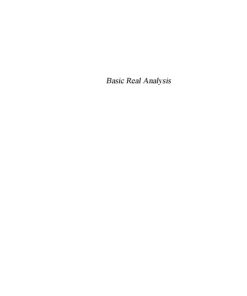Fire Performance Analysis for Buildings 2nd Edition by Robert Fitzgerald 1118926338 9781118926338
$50.00 Original price was: $50.00.$25.00Current price is: $25.00.
Fire Performance Analysis for Buildings 2nd Edition by Robert W. Fitzgerald – Ebook PDF Instant Download/DeliveryISBN: 1118926338, 9781118926338
Full download Fire Performance Analysis for Buildings 2nd Edition after payment.
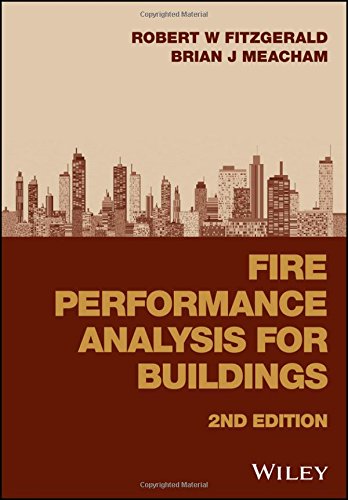
Product details:
ISBN-10 : 1118926338
ISBN-13 : 9781118926338
Author: Robert W. Fitzgerald
A building fire is dynamic. A continually changing hostile fire environment influences time relationships that affect fire defenses and risks to people and building functions. The fire and fire defenses in each building interact with different sequences and distinct ways. Risks are characterized by the building’s performance. Significantly updated and restructured new edition Fire Performance Analysis for Buildings, 2nd Edition organizes the complex interactions into an analytical framework to evaluate any building – at any location – built under any regulatory jurisdiction or era. Systematic, logical procedures evaluate individual component behavior and integrate results to understand holistic performance. The Interactive Performance Information (IPI) chart structures complex time-related interactions among the fire, fire defenses, and associated risks. Quantification uses state-of-the-art deterministic methods of fire safety engineering and fire science. Managing uncertainty is specifically addressed. Key features: Emphasizes fire performance analysis for new or existing buildings.
Fire Performance Analysis for Buildings 2nd Table of contents:
1 Fire Performance and Buildings
1.1 The Dynamics of Building Fire Performance
1.2 The Anatomy of Building Fire Safety
1.3 Analysis and Design
1.4 Performance Analysis
1.5 Quantification
1.6 The Organization
Part I: The Foundation
2 Preliminary Organization
2.1 Introduction
2.2 Overview of Evaluations
PART ONE: ORGANIZATIONAL CONCEPTS
2.3 The Diagnostic Fire
2.4 Anatomy of a Representative Fire
2.5 Fire Prevention
2.6 Fire Scenarios
PART TWO: BARRIERS, SPACES, AND CONNECTIVITY
2.7 Spaces and Barriers
2.8 Barriers and Fire
2.9 Barrier Performance
2.10 Space–Barrier Connectivity
2.11 Virtual Barriers
2.12 Virtual Barrier Applications
2.13 Space–Barrier Discussion
PART THREE: FIRE DEFENSES
2.14 Fire Defenses
2.15 Active Fire Defenses
2.16 Passive Fire Defenses
2.17 Closure
3 Tools of Analysis
3.1 Introduction
PART ONE: THE LOGIC
3.2 The Framework Logic
3.3 The Major Parts
3.4 Event Logic Diagrams
3.5 Event Logic Observations
3.6 Logic Networks
3.7 Decomposing Logic Networks
3.8 Network Diagram Observations
3.9 Single Value Networks
3.10 Time Relationships Using Event Trees
3.11 Continuous Value Networks
3.12 The IPI Chart
3.13 Coding
PART TWO: SPACE–BARRIER CONNECTIVITY
3.14 Introduction
3.15 Room Connectivity
3.16 Building Interconnectivity
3.17 Segmenting Buildings
3.18 Summary
PART THREE: ADDITIONAL TOOLS
3.19 Networks and Charts
3.20 Organizational Charts
3.21 Organizational Networks
3.22 Closure
4 An Introduction to the Interactive Performance Information Chart
4.1 Introduction
4.2 The Basic Template
4.3 The Working Template
4.4 Reading IPI Charts
4.5 Building Comparisons
4.6 IPI Enhancements
4.7 Summary
5 Quantification
5.1 Performance Evaluations
5.2 Information Accessibility
5.3 Quantification
5.4 Performance Estimates
5.5 Uncertainty in Performance Estimates
5.6 Philosophical Reflections
5.7 Closure
Part II: The Parts
6 The Room Fire
6.1 Introduction
PART ONE: ROOM FIRE CONCEPTS
6.2 Fire
6.3 The Role of Heat: Ignition
6.4 The Role of Heat: Heat of Combustion and Heat Release Rate
6.5 The Role of Heat: Heat Transfer
6.6 Realms of Fire Growth
6.7 Fire Development: Fire Free Status to EB
6.8 Room Fires
6.9 Feedback
6.10 Flashover
6.11 Fully Developed Fire
6.12 The Role of Ventilation
6.13 The Role of Barriers
6.14 The Fire Development Process: EB to FO
6.15 The Fire Development Process: FO to Burnout
6.16 Summary
PART TWO: ROOM FIRE DESCRIPTORS
6.17 Introduction
6.18 Fuels
6.19 Fuel Packages and Fuel Groups
6.20 Heat Release Rate
6.21 Fire Size Measures
6.22 Overview of Factors that Affect Room Fire Behavior
6.23 Flashover
6.24 αt Fires
6.25 Realm 6: Fully Developed Fire
6.26 Limits of Applicability
6.27 Large Rooms: Full Room Involvement
6.28 Fire Safety Engineering in the Information Age
6.29 Closure
7 The Room Fire: Qualitative Analysis
7.1 The Role of Qualitative Analysis
7.2 Qualitative Estimates for Room Fires
PART ONE: BOTTOM‐UP ESTIMATES
7.3 Bottom‐up Scenario Estimates
7.4 Time and the Fire Growth Potential
7.5 FGP Adjustments
7.6 Estimating Spread‐over Scenarios
PART TWO: TOP‐DOWN ESTIMATES
7.7 Qualitative Room Classifications
7.8 FGP Comparisons
7.9 Interior Design and Model Rooms
7.10 FGP Classification Groups
7.11 Selecting FGP Groups
7.13 Closure
8 Beyond the Room of Origin
8.1 Introduction
8.2 The Inspection Plan
PART ONE: BARRIER EFFECTIVENESS
8.3 Barrier Functions in Buildings
8.4 Barrier Fire Functions
8.5 Concepts for Barrier Evaluations
8.6 Barrier Failure Modes
8.7 Barrier Failures and Building Performance
Part Two: Barrier–Space Modules
8.8 Introduction
8.9 Barrier–Space Modules
8.10 Massive Barrier Failure ( )
8.11 Hot‐spot Barrier Failure ( )
8.12 The Role of Interior Finish
8.13 Virtual Barriers
8.14 Qualitative Diagnostic Fire Analysis: Room Classifications
8.15 Qualitative Diagnostic Fire Analysis: Barrier Contributions
8.16 Qualitative Diagnostic Fire Analysis: Modules
PART THREE: QUALITATIVE FIRE ANALYSIS
8.17 Introduction
8.18 The Process
8.19 Discussion
8.20 Information Technology Enhancements
9 Smoke Analysis
9.1 Introduction
9.2 The Plan
9.3 Smoke
9.4 Buoyancy Forces
9.5 Natural Air Movement
9.6 Wind
9.7 Tenability Considerations
9.8 Smoke Movement Analysis
9.9 Smoke Movement Networks
9.10 Qualitative Smoke Movement Analysis
9.11 Quantitative Analysis
9.12 Discussion
10 The Diagnostic Fire
10.1 Diagnostic Fires
10.2 Interactive Performance Information (IPI) Chart and the Diagnostic Fire
10.3 Closure
11 Fire Detection
11.1 Introduction
PART ONE: AUTOMATIC DETECTION
11.2 Instrument Detection
11.3 Detection Instruments
11.4 Automatic Detection Analysis
11.5 Instrument Reliability
PART TWO: HUMAN DETECTION
11.6 Concepts in Human Fire Detection
11.7 Human Detection Analysis
11.8 Closure
12 Alarm: Actions After Detection
12.1 Introduction
PART ONE: ALERT OCCUPANTS
12.2 Focus on Alert
12.3 Alerting Occupants
12.4 Summary
PART TWO: NOTIFY LOCAL FIRE DEPARTMENT
12.5 Introduction
12.6 Human Notification (MN)
12.7 Discussion
12.8 Automated Notification Services
12.9 Discussion
PART THREE: BUILDING SYSTEM INTERFACES
12.10 Release Services
13 Fire Department Extinguishment: Arrival
13.1 Introduction
13.2 Organizing the Topic
PART ONE: MANUAL EXTINGUISHMENT OVERVIEW
13.3 The Role of the Fire Department
13.4 Building Analysis Overview
13.5 Part A: Ignition to Notification
13.6 Part B: Notification to Arrival
13.7 Part C: Arrival to Extinguishment
PART TWO: COMMUNITY FIRE DEPARTMENTS
13.8 Fire Department Organizations
13.9 Fire Companies
13.10 Building Fire Brigades
PART THREE: COMMUNITY FIRE RESPONSE
13.11 Fire Department Response Time
13.12 Communications Centers
13.13 Alarm Handling Time
13.14 Turnout Time
13.15 Travel Time
13.16 Response Time Analysis
14 Fire Department Extinguishment: First Water (MA)
THE FIRE FIGHTER AND THE ENGINEER
14.1 Introduction
PART ONE: AN OVERVIEW OF MANUAL EXTINGUISHMENT ANALYSIS
14.2 The Process
14.3 Phase 1: Initial Water Application (MA)
14.4 Summary
PART TWO: A BRIEF LOOK AT FIRE FIGHTING
14.5 Initial Fire Ground Actions
14.6 Information
14.7 Pause for Discussion
14.8 Manual Fire Fighting
14.9 No Two Fires Are Alike
14.10 Summary
PART THREE: SUPPLY WATER ANALYSIS
14.11 Introduction
14.12 Scenario Analysis
14.13 Supply Water Analysis
14.14 Supply Water Discussion
14.15 Project Analysis
14.16 Task Modules
14.17 Time and Tasks
14.18 Variability
14.19 General Analysis
14.20 Work Breakdown Structure
14.21 Task Precedence
14.22 Network Construction
14.23 Network Calculations
14.24 Variation Analysis
14.25 Additional Examples
14.26 Levels of Detail
14.27 Time Coordination
14.28 Discussion
PART FOUR: INTERIOR FIRE ATTACK ANALYSIS
14.29 Introduction
14.30 Overview of Stretching Interior Attack Lines
14.31 Task Modules
14.32 Architectural Segments
14.33 Architectural Obstacles
14.34 ALP Pre‐movement
14.35 Multiple Attack Lines
14.36 Variables
14.37 Time Estimates
14.38 Attack Route Analysis
PART FIVE: PHASE 1 ANALYSIS
14.39 Introduction
14.40 Phase 1 Comments
14.41 Calculating Time Durations
14.42 If…
14.43 What If…
14.44 The IPI Chart
14.45 Summary
15 Fire Department Extinguishment
15.1 First Water Applied… Now What?
15.2 The Engineer and the Incident Commander
15.3 Pause to Review Available Information
15.4 Phase 2 Assessments
15.5 Offensive Attack
15.6 Defensive Fire Fighting
15.7 Barrier Functions in Fire Fighting
15.8 Exposure Protection
15.9 Constraints
15.10 Critical Fire Conditions
15.11 Fire Control (MC)
15.12 Fire Extinguishment (ME)
15.13 Summary
16 Automatic Sprinkler Suppression
16.1 Introduction
16.2 Sprinkler System Performance
PART ONE: SPRINKLER SYSTEMS
16.3 Sprinkler Extinguishment
16.4 The Sprinkler System
16.5 Types of Sprinkler Systems
PART TWO: SPRINKLER PERFORMANCE
16.6 Organization for Thinking
16.7 Agent Application (AA)
16.8 Agent Application Events
16.9 Operational Effectiveness Observations
16.10 Sprinkler Fusing (fac)
16.11 Water Discharge (dac)
16.12 Water Flow Continuity (cac)
16.13 Obstructions (wac)
16.14 Operational Effectiveness Guidelines
16.15 Analysis and the IPI Chart
16.16 Auxiliary Equipment and Other Conditions
16.17 Partially Sprinklered Buildings
16.18 Fire Department Mutual Aid
16.19 Automatic Suppression
16.20 Closure
17 The Composite Fire
17.1 Introduction
17.2 The Fire Limit (L)
17.3 Composite Fire
17.4 Theoretical Completeness
17.5 Summary
18 Materials, Codes, Standards, Practices, and Performance
18.1 Introduction
PART ONE: BUILDING CONSTRUCTION
18.2 The Structural Frame
18.3 Material Behavior in Fires
PART TWO: HISTORICAL PERSPECTIVE
18.4 The Built Environment Around World War I
18.5 Structural Practice Around World War I
18.6 A Century of Evolution
18.7 Fire Safety Around World War I
18.8 The Fire Safety Solution
18.9 Building Code Organization for Fire Safety
18.10 Structural Fire Topics Around World War I
18.11 Building Code Observations
PART THREE: FIRE ENDURANCE TESTING
18.12 Fire Test Interpretations
18.13 The Standard Fire Endurance Test
18.14 Fire Endurance Test Discussion
PART FOUR: FIRE SEVERITY
18.15 Introduction
18.16 Fuel Loads
18.17 The Ingberg Correlation
18.18 Room Fire Discussion
18.19 Fire Severity Theories
18.20 Fire Severity Comparisons
18.21 Awareness Pause
18.22 Estimating Burnout Time
18.23 Influences on Barrier Performance
18.24 Automatic Protection and Barriers
PART FIVE: TRANSITIONS
18.25 The Issue
19 Concepts in Structural Analysis for Fire Conditions
19.1 Introduction
19.2 Structural Fire Performance
PART ONE: BUILDING DESIGN
19.3 The Development Process
19.4 Building Design
19.5 Information Technology
PART TWO: STRUCTURAL ENGINEERING AND BUILDING DESIGN
19.6 The Master Builder
19.7 The Rise of Engineering
19.8 The Building
19.9 The Emergence of Structural Engineering
19.10 A Brief Pause about 1950
19.11 The Great Leap Forward
19.12 Structural Design for Fire Conditions
PART THREE: STRUCTURAL ENGINEERING
19.13 Introduction
19.14 Beam Analysis
19.15 Structures and Materials
19.16 Structural Engineering
19.17 Structural Engineering and Building Design
PART FOUR: STRUCTURAL ANALYSIS FOR FIRE CONDITIONS
19.18 Introduction
19.19 Outcomes
19.20 Pause for Discussion
19.21 The Process
19.22 Structural Mechanics
19.23 Protection Methods
19.24 Diagnostic Fire
19.25 Heat Transfer
19.26 Structural Performance
19.27 Reinforced Concrete
19.28 Mechanical Properties
19.29 Flexural Members in Reinforced Concrete
19.30 Concrete Members at Elevated Temperatures
19.31 Pause for Discussion
19.32 Other Materials
19.33 Summary
20 Target Spaces and Smoke
20.1 Introduction
20.2 Orientation
20.3 Tenability Measures for Humans
20.4 Visibility in Smoke
20.5 Equipment and Data Storage
20.6 Overview of Target Space Analysis
20.7 Target Rooms
20.8 Barrier Effectiveness
20.9 Mechanical Pressurization
20.10 Fire Department Ventilation
20.11 Summary
21 Life Safety
21.1 Introduction
21.2 Human Reaction to Products of Combustion
21.3 Tenability
21.4 Fire Fighter Safety
22 Risk Characterizations
22.1 Introduction
22.2 The Exposed
PART ONE: HUMAN SAFETY
22.3 Life Safety
22.4 Overview of Life Safety Alternatives
22.5 Prescriptive Code Egress
22.6 Plans Approval for Prescriptive Code Egress
22.7 Overview of Egress Risk Characterizations
22.8 Discussion
22.9 Pre‐evacuation Activities
22.10 Pre‐evacuation Evaluations
22.11 Travel Times
22.12 Defend in Place
22.13 Areas of Refuge
22.14 Fire Department Rescue I
22.15 Risk Characterizations for Life Safety
PART TWO: OTHER RISKS
22.16 Property Protection
22.17 Continuity of Operations
22.18 Threat to Neighboring Exposures
22.19 Threat to Environment
22.20 Closure
23 Fire Prevention
23.1 Introduction
PART ONE: PREVENT ESTABLISHED BURNING
23.2 Prevent EB
23.3 Occupant Extinguishment
23.4 Portable Fire Extinguishers
23.5 Evaluating Extinguisher Effectiveness
23.6 Discussion
PART TWO: AUTOMATIC SPECIAL HAZARD SUPPRESSION
23.7 Introduction
23.8 Carbon Dioxide Systems
23.9 Clean Agent Systems
23.10 Dry Chemical Extinguishing Systems
23.11 Water‐spray Extinguishing Systems
23.12 Fine Water Mist Extinguishing Systems
23.13 Foam Extinguishing Systems
23.14 Explosion Suppression Systems
23.15 Building Evaluations for Special Hazard Installations
23.16 Closure
Part III: The Analysis
24 Fire Performance
24.1 Organizational Concepts
24.2 Performance Evaluations
24.3 Analytical Framework
24.4 Fire, Risk, and Buildings
25 The Diagnostic Fire
25.1 Introduction
25.2 Top‐down Estimates
25.3 Modular Estimates
25.4 Bottom‐up Scenario Analysis
25.5 Network Estimates
25.6 Scenario Applications
25.7 Interactive Performance Information (IPI) Chart Applications
26 Fire Detection
26.1 Introduction
PART ONE: AUTOMATIC DETECTION
26.2 Detection Analysis
26.3 Detection Example
26.4 Detection Estimate
26.5 Detector Reliability
PART TWO: HUMAN DETECTION
26.6 Concepts in Human Detection Analysis
26.7 Human Detection Analysis
26.8 Closure
27 Fire Department Notification
27.1 Introduction
27.2 The Human Link in Notification
27.3 Human Notification Analysis
27.4 Human Notification
27.5 Automated Notification Analysis
27.6 Closure
28 Fire Department Extinguishment
28.1 Introduction
28.2 Framework for Analysis
28.3 Notification to Arrival
28.4 Fire Department Response
28.5 Arrival to Extinguishment
28.6 Phase 1 Analysis
28.7 Phase 2 Analysis
28.8 Phase 3 Analysis
28.9 Putting It Together
28.10 Discussion
28.11 Closure
29 Automatic Sprinkler Suppression
29.1 Introduction
29.2 Agent Application (AA)
29.3 Design Effectiveness (AC)
29.4 Automatic Sprinkler Suppression (A)
29.5 Automatic Sprinkler System Analysis
29.6 Sprinkler Reliability
29.7 Closure
30 The Composite Fire
30.1 Introduction
30.2 Event Logic Description
30.3 Network Description
30.4 Summary
31 Structural Performance
31.1 Introduction
31.2 Interactive Performance Information (IPI) Documentation
31.3 IPI Numerical Estimates
31.4 Summary
32 Target Space Smoke Analysis
32.1 Introduction
32.2 Success or Failure?
32.3 Target Room Performance Bounds
33 Life Safety Analysis
33.1 Introduction
33.2 The Exposed
33.3 The Exposure
33.4 The Window of Time
33.5 Pre‐movement Time for Egress
33.6 Occupant Life Safety (LS)
33.7 Discussion
33.8 Defend in Place
33.9 Closure
34 Prevent Established Burning
34.1 Introduction
PART ONE: ESTABLISHED BURNING PREVENTION
34.2 Ignition Potential
34.3 Established Burning Evaluation
34.4 Scenario Selection
34.5 Prevent EB: Discussion
PART TWO: SPECIAL HAZARDS PROTECTION
34.6 The Role of Special Hazards Suppression
34.7 Framework for Analysis
34.8 Special Hazards Analysis
34.9 Protection Combinations
34.10 Closure
Part IV: Managing Uncertainty
35 Understanding Uncertainty
35.1 Introduction
35.2 Window of Uncertainty
35.3 Calibrating Uncertainty
35.4 Degree‐of‐Belief Estimations
35.5 The Role of the Analytical Framework
35.6 Sprinkler Analysis Networks
35.7 Sprinkler Control (AC)
35.8 Pause to Organize Thoughts
35.9 Calculating Single Value Outcomes
35.10 Graphing Results
35.11 Cumulative Evaluations
35.12 Sprinkler Reliability (AA)
35.13 Sprinkler System Performance (A)
35.14 Control and Extinguishment
35.15 Sprinkler Performance for a Building
35.16 Visual Thinking
35.17 The IPI Chart
35.18 The Narrative
35.19 Sprinklers and the Fire Department
35.20 Other Components
35.21 Summary
36 Visual Thinking
36.1 Introduction
36.2 A Case Study
36.3 A Way of Thinking
36.4 The Interactive Performance Information (IPI) Chart Relation
36.5 Performance Evaluators
36.6 Reading Performance Curves
36.7 The L Curve
36.8 L Curve Illustration
36.9 Variability and Reliability
36.10 Summary
37 Introduction to Risk Management
37.1 Introduction
PART ONE: THE PROCESS
37.2 Audience
37.3 Fire Safety Management
37.4 Decisions and Uncertainty
37.5 Management Applications
37.6 Comparisons
37.7 Process Overview
PART TWO: INFORMATION ACQUISITION
37.8 Introduction
37.9 Understand the Problem
37.10 Describe the Building
37.11 Evaluate Performance
37.12 Characterize Risk
PART THREE: DEVELOP A RISK MANAGEMENT PROGRAM
37.13 Structure a Risk Management Program
37.14 Evaluate “Prevent EB”
37.15 Evaluate Special Hazards Protection
37.16 Emergency Preparedness
37.17 Decision Analysis
37.18 Prepare the Presentation
37.19 Decision‐making
38 Analytical Foundations
38.1 Historical Origins
PART ONE: LOGIC DIAGRAMS AND NETWORKS
38.2 Event Trees
38.3 Fault and Success Trees
38.4 Fault and Success Tree Calculations
38.5 Fault and Success Trees Beyond the Room of Origin
38.6 Network Organization
38.7 Network Calculations
38.8 Sequential Path Analysis
38.9 Rooms Beyond the Room of Origin
38.10 Modular Analysis
38.11 Closure
PART TWO: PROBABILITY
38.12 Meanings of Probability
38.13 Fire Safety Applications
38.14 Degree of Belief
38.15 Mathematics of Probability
38.16 Assessment Quality
PART THREE: THE ROLE OF JUDGMENT
38.17 Introduction
38.18 Building Decisions
38.19 Judgment in Engineering
38.20 Language and Culture
38.21 Uncertainty and Performance
38.22 Summary
People also search for Fire Performance Analysis for Buildings 2nd:
performance-based fire safety design pdf
fire protection performance based design
performance based structural fire design
fire damage evaluation for residential and commercial buildings
performance based design fire protection
Tags: Fire Performance, Analysis, Buildings, Robert Fitzgerald
You may also like…
Mathematics - Analysis
Basic Real Analysis 2nd Edition by Anthony W Knapp ISBN 978-1429799997
Politics & Philosophy - Anthropology
Uncategorized
Technique - Construction
Tall wood buildings design construction and performance Green
Biography & Autobiography - Sports & Adventure Biography
Mathematics - Analysis
Politics & Government




